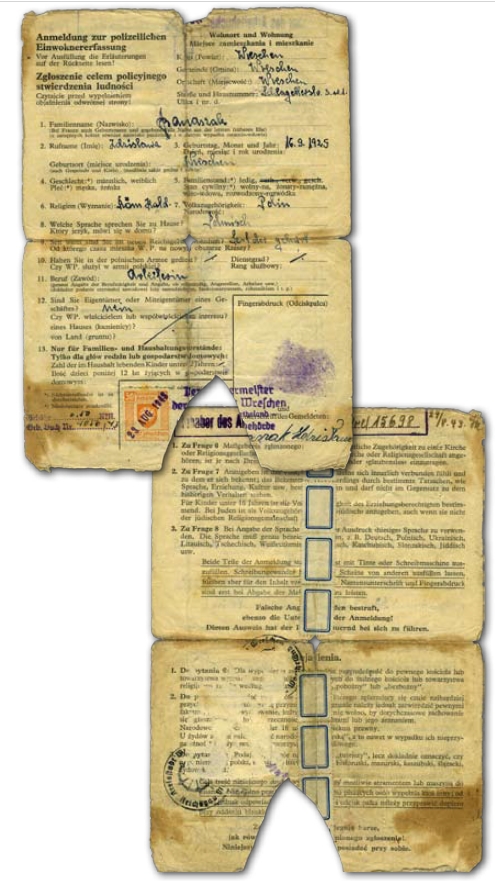“registration of the population by the police”, also known as Einwohnererfassunung or colloquially “palcówka” (fingerprint) – once instead of a photograph of the holder of the document, fingerprints were requested to serve as a proof of identification. “Palcówka”, was a two pages bilingual document, used in the Polish territories incorporated in the Nazi German Reich (Reichsgau Wartheland and Górny Śląsk Province).These documents included basic personal data as address, religion, nationality, language (used at home), profession, working place, if one served in the Polish Army and if so, his rank in the Army. It was also included for how long one had been living in the occupied territories, if one owned some lands, real estate, business, and the number of children under 12 years old that were part of the household. If one would provide false data, or incomplete information, he would suffer the consequences, according to regulations. The police officer had to be present during the registration procedure (signature and fingerprints) and would after that approve the document with a stamp. As there was too many people to register, there were not enough police officers to handle this procedure, which was solved by taking in other employees. In the backside of the form there were instructions on how to fill this document. In the point of the form about religion one was instructed to write down if he had religious belief or not. In the case of being Jewish, one was instructed to write down that he was Jewish even if he did not belong to the Jewish Community. Regarding languages one was not allowed to answer about a local language but had to specify one of these languages: Polish, German, Lithuanian, mazurski, ślązacki, kaszubski. The registration served as an identity card. Also, when a person got a “Arbeitsbuch” – “employment record book”, it would be notified in the “Palcówka”.
